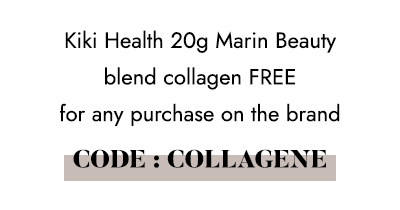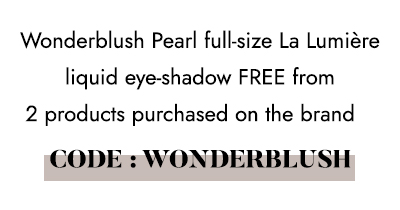Why choose organic sunscreen?
Are you still hesitating between mineral or chemical sunscreen? Organic sunscreens still suffer from a bad reputation today: white marks, greasy and sticky texture, less effective formula… What is it really? We tell you everything!
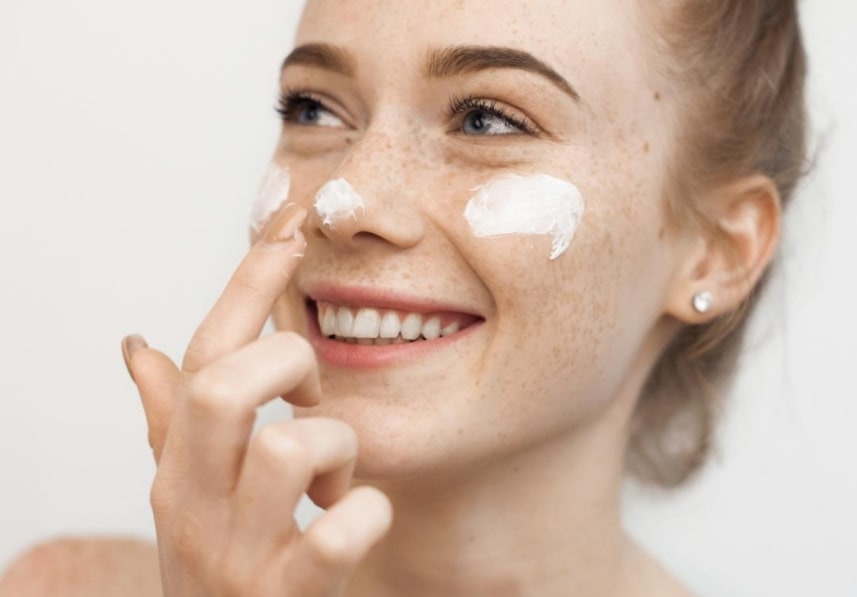
Mineral or chemical sunscreen: the difference
What is a mineral screen?
The main active ingredient in any sunscreen, whether organic or not, is the sunscreen, which protects against UVA and UVB rays.
- Conventional sunscreens contain chemical filters such as benzophenone or oxybenzone suspected of being mutagenic and responsible for 50% of allergies to sunscreens (just that!).
- In an organic sunscreen, they are replaced by 100% natural mineral filters, such as zinc oxide or titanium dioxide, which reflect UV rays and have the advantage of being non-allergenic.
While chemical filters absorb UV rays, mineral filters act as a barrier or a mirror: they reflect UV rays to prevent them from coming into contact with the epidermis.
Here is a diagram for better understanding:
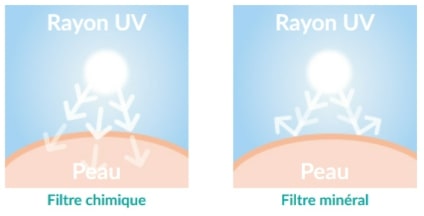
Why mineral sunscreen?
Apart from the sunscreen, we often find in traditional sunscreens:
- preservatives like paraben which is suspected of disrupting the hormonal system
- silicones to obtain a pleasant texture that glides on the skin
- potentially allergenic synthetic fragrances
All these substances are banned from organic sunscreen whose ingredients are of natural origin. A mineral sunscreen will also have the advantage of containing many moisturizing, nourishing and antioxidant active ingredients that take care of the skin, such as vegetable oils or aloe vera for example.
Is organic sunscreen as effective?
As for a classic sunscreen, an organic sunscreen has the obligation to comply with European directives and the requirements of the French Agency for Sanitary Safety of Health Products (AFSSPS), which guarantees its effectiveness against UV and its harmlessness.
But its specifications will be much stricter since it also meets the criteria required by organic labels (minimum 95% of ingredients of natural origin, at least 10% of ingredients from Organic Farming, etc.)
In summary, an organic sunscreen will be just as effective as a traditional cream, health and ecological responsibility in addition.
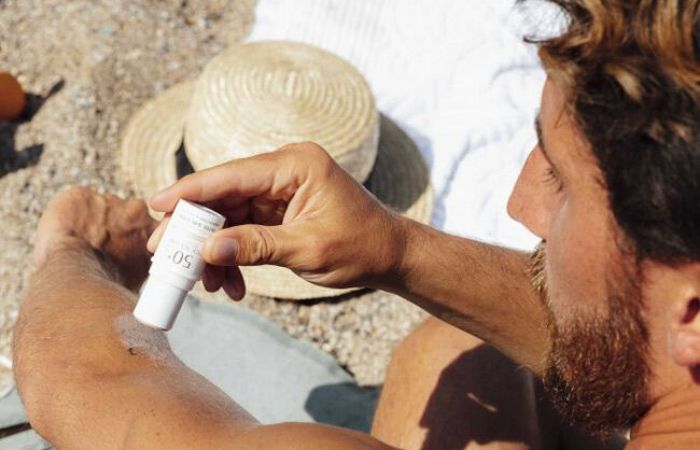
Why is sunscreen white?
The main criticism made of organic sunscreens? Leave white marks. So, true or false? We tell you everything.
The truth about nanoparticles
These famous white traces of sunscreen are due to the micro-pigments contained in the mineral filters (titanium dioxide and zinc oxide), which remain on the surface of the skin.
To facilitate the penetration of the sunscreen and avoid this white effect, certain brands of organic or chemical sunscreens have reduced the mineral filters to particles of the order of a nanometer: nanoparticles.
The problem? These tiny particles are accused of crossing the skin barrier and accumulating in the body, without the long-term effects being known. A number of organic labels (Ecocert, Cosmebio, Nature et Progrès, BDIH, etc.) have therefore decided to formally prohibit their presence.
On our online store, we have chosen to only offer certified organic sunscreens without nanoparticles.
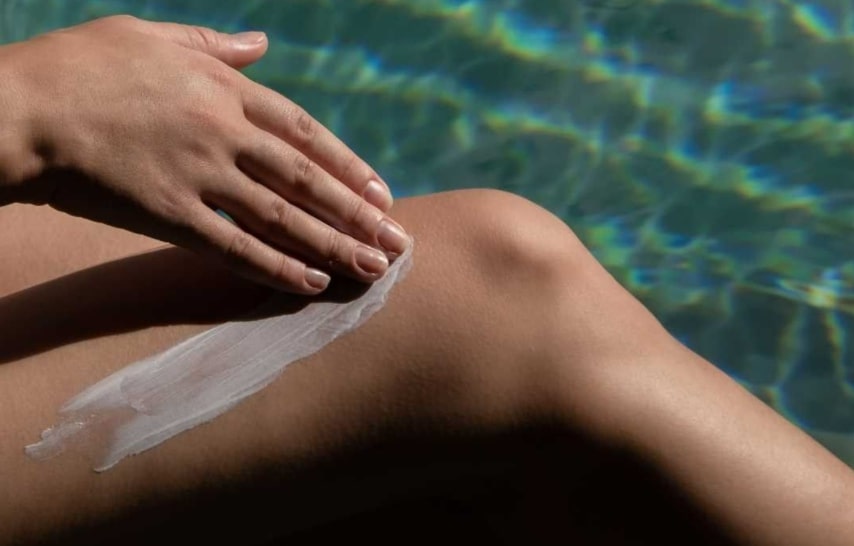
Update: Why does the mention [nano] now appear on organic sunscreens?
Due to a change in measurement technique since January 1, 2022 in France, mineral screens formerly qualified as "non-nano" are now identified as "nano": in the list of ingredients the mention [nano] appears alongside the titanium dioxide and zinc oxide.
Currently, there is no standardized technique for evaluating nanoparticles, and measurement techniques are evolving.
The new measurement method, called the SEM technique, is now the only one used by the DGCCRF - although there is no method imposed by the regulations - and it modifies the real state of the mineral screens before measurement.
This does not change the formulas themselves, which retain total harmlessness. Numerous scientific studies have proven that the titanium dioxide and zinc oxide present in certified organic sunscreens are in the form of solid aggregates which remain on the surface of the skin, without any risk of transcutaneous passage (see study by no - skin penetration conducted by the Collectif des Solaires Bio, bringing together nine manufacturers of organic sunscreens).

An organic sunscreen without white marks, is it possible?
Fortunately, thanks to progress in green chemistry in recent years, it is finally possible to find an organic sunscreen that penetrates easily and does not whiten the skin:
Some manufacturers of organic sunscreens such as Acorelle, Biosolis or Les Laboratoires de Biarritz add vegetable oils such as Karanja oil to their formulas, which absorb UV rays while nourishing the skin.
Result: less mineral filters, a thinner texture and farewell to the white effect !
Today's natural sunscreens compete in innovation to offer us textures that spread without worry. Non-greasy formula, high protection, water resistance and addictive fragrance...organic sunscreens have it all!
Our tip? Opt for a tinted face sunscreen to avoid the white effect, or add 2 drops of the Impossible Glow Pai in bronze tint to your white sunscreen for a tanned and luminous effect.
This trick also works for the body, and know that there are SPF 20 or 30 organic sun oils that protect against UV while enhancing the skin, with an ultra sexy satin finish.
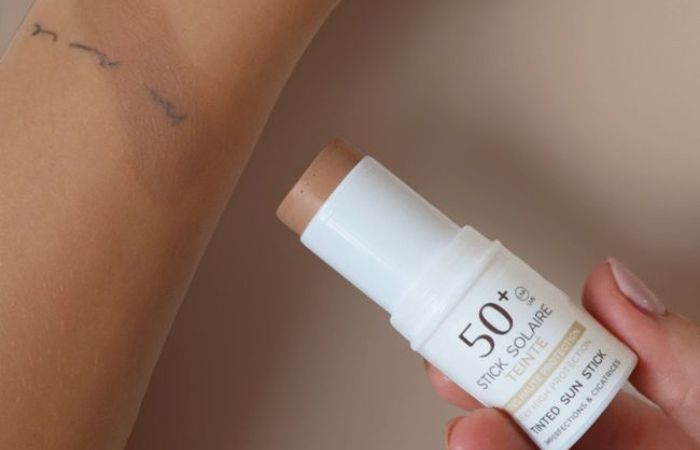
So, ready to adopt an organic sunscreen?
You might also like these items:
5 questions/answers about self-tanning
What is the best natural self tanner
The top 5 organic sunscreens
7 questions/answers about sunscreen
How do I choose my organic sunscreen?
Comments



